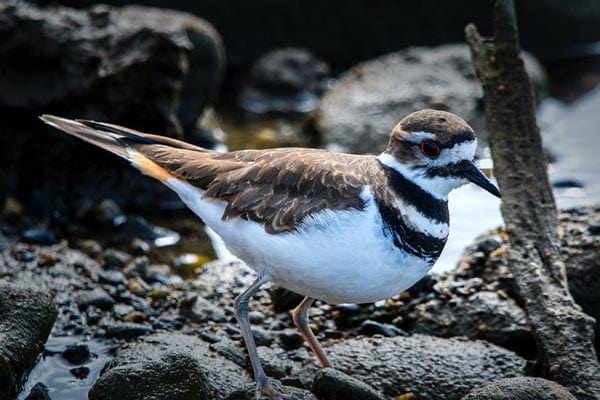
photo credit: Frank Cone from Pexels
Killdeer is a plover with a piercing call that sounds like “kill-dee” (take after its name). Although known for being shy, these birds often inhabit rooftop buildings and other open areas, sometimes near backyards or farms. It’s also the most popular breeding shorebird featuring a double breast band and a single band across its eyes.
In this article, we are going to cover a wide variety of topics related to the Killdeer, such as:
- How to identify them
- How, when, and where they migrate
- Their diet
- How and where they nest
- And much more…
So, without any more delay…
Let’s jump right into it and learn more about the Killdeer.
Killdeer Facts
- Common Name: Killdeer
- Scientific Name: Charadrius Vociferus
- Scientific Family: Charadriidae
- Life Span: 10 years and 11 months
- Size: 7.9 to 11 inches
- Wingspan: 18.1 to 18.9 inches
- Weight: 2.6 to 4.5 oz
- Conservation status: Least Concern
How To Identify A Killdeer
Killdeers are medium-sized and long-winged birds with a short and fairly thick dark bill. Their legs are long and flesh-colored.
These birds are characterized by a red ring around their eyes, two black bands across their chest, and one black band across their eyes. They also have brown backs, black wings with white stripes, and white underparts.
Differences Between Male & Female
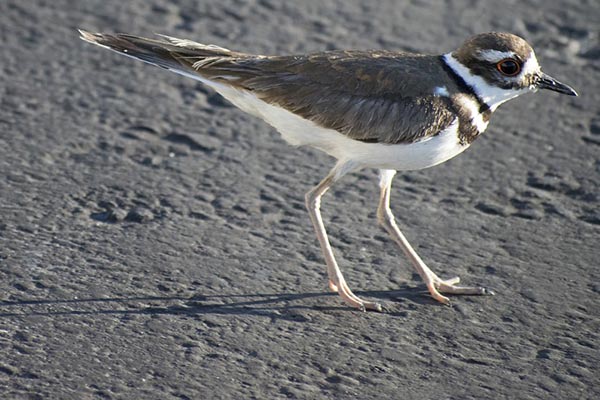
photo credit: Michael Webb from Pixabay
Male and female Killdeers look very similar in appearance. During the breeding season, however, females begin to show additional brown coloring on their faces.
Differences In Summer Plumage vs Winter Plumage
Killdeers don’t show any difference in appearance throughout the year, regardless if it’s the winter or summer season.
Killdeer Sounds
Where You’ll See Killdeer
Killdeers are found across North America and in some parts of South America. They are native birds in the Nearctic and Neotropical regions and can sometimes be seen in Central America, the Caribbean, the United States to Mexico.
As shorebirds, Killdeers are often found near the water edges. But unlike many shorebirds, these birds are also found in dry and open areas such as fields, pastures, wetlands, and even rooftops, lawns, and parking lots.
Killdeer Migration Patterns
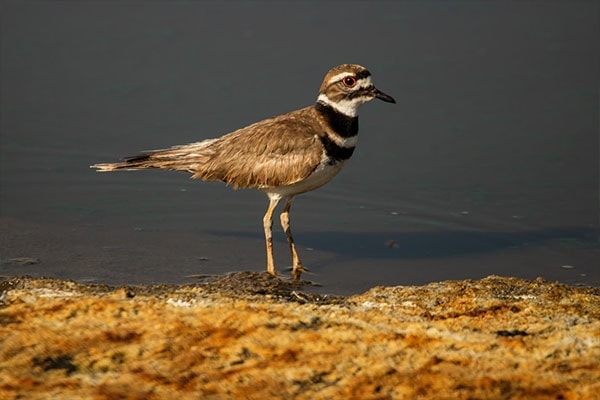
photo credit: Pablo García Saldaña on Unsplash
Killdeers are resident or medium-distance migratory birds. It has been found that these birds don’t migrate unless they need to, and this is only when the temperature is too cold for them.
Breeding season usually starts early spring, around mid-February. The migration begins from August to September, depending on the temperatures. If warm weather continues, some Killdeers stay until November.
Diet and Feeding Preferences
The Killdeer’s diet mostly consists of insects. These birds prefer eating invertebrates the best such as earthworms, snails, crayfish, grasshoppers, and beetles. When insects are not primarily available, Killdeers will eat berries or seeds left on the ground by farmers.
Nesting Data
- Clutch Size: 4 to 6 eggs
- # of Broods: 1 to 3 broods
- Incubation Period: 22 to 28 days
- Nestling Period: 20-31 days
- Egg Description: Buff-colored with blackish-brown marks
Nesting
Killdeers are monogamous birds, and pairs would usually form around spring. Male Killdeers are the ones who claim territory before they attract a mate.
Chosen nest sites are usually on the ground or sometimes on a roof. Male and female Killdeers would help each other build the nest by scratching the ground until they create a depression. They would sometimes add some pebbles, grass, twigs, shells, and other light-colored materials after egg-laying.
Killdeer Behavior
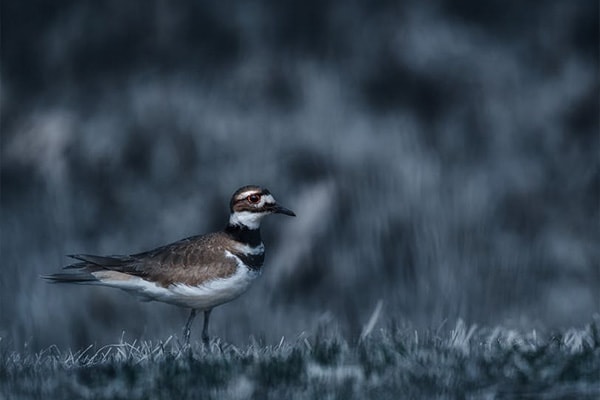
photo credit: Skyler Ewing from Pexels
Killdeers do not form flocks; instead they are usually in pairs. They can also be very loud that they are easily heard throughout their habitat. Their piercing call resembles “killdeer” which is where the name came from.
These birds may be common in backyards, but they can be very shy. They tend to run away and sometimes would call loudly when they see predators or intruders. And they also practice the “broken-wing” display to divert the attention of predators from their nest to them.
Tips for Birdwatchers On How To Attract Killdeer
Killdeers are one of those birds that don’t visit bird feeders as they can be timid. However, if you want to attract them, having a wide-open lawn is ideal. Then, try to scatter some seeds in your area. But the best tactic is to make your lawn more insect-friendly. So don’t use pesticides and other chemicals to get rid of insects because the killdeers can do that for you.
Threats To The Killdeer
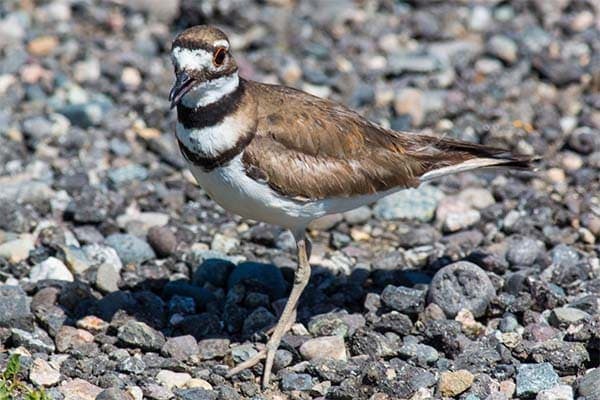
photo credit: Lloyd Blunk on Unsplash
Although belonging to the “least concern” conservation group, a decline has been observed in these birds’ numbers, especially in Canada.
As killdeers are fond of human inhabitants, they are most prone to road accidents, building collisions, and poisoning with pesticides. They often build their nests on the ground, making them number one targets of predators, too, like gulls, crows, snakes, foxes, coyotes, cats and dogs, raccoons, and skunks.
Fun & Interesting Facts
- Killdeer got its name from their bird call that sounds like “kill-deer”.
- They are great actors, pretending to have a broken-wing to escape
- predators.
- They are shorebirds known to be great at swimming, but they prefer staying in dry habitats.
- They spend more time running on the ground than flying in the air.
- They are the largest of the ringed plovers.
- The oldest recorded Killdeer was ten years and 11 months old.
Explore More Species in This Family
- Black-bellied Plover
- American Golden-Plover
- Pacific Golden-Plover
- Snowy Plover
- Wilson’s Plover
- Semipalmated Plover
- Piping Plover
- Mountain Plover
The post Killdeer: Bird Identification, Habits, Facts, Nesting appeared first on BirdInformer.com.
from BirdInformer.com https://ift.tt/3tXrZD5

No comments:
Post a Comment